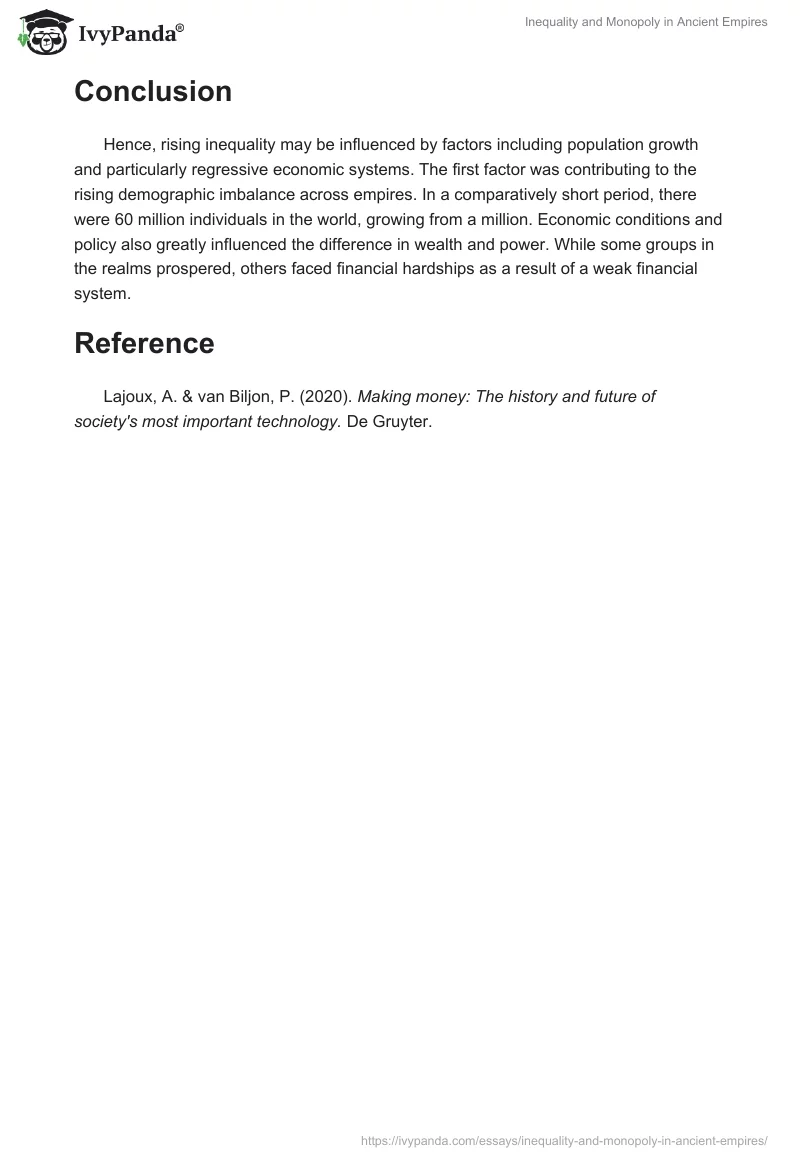Introduction
Inequality in wealth, gender, and race had not been addressed before the beginning of the 20th century. Before this, research was scarce and did not give the full picture as to why certain empires struggled or failed. However, numerous assumptions and facts allow us to connect them. According to some sources, the reasons behind the inequality in wealth and power in ancient empires is not mere monopolies. Population increase and particularly regressive economic regimes are potential contributors to the causes of rising inequality.
Discussion
The first reason for the growing disparity in empires is the fact that the population increased incessantly. For example, it was estimated that there were just a million people on the planet before farming began establishing itself in numerous regions in about 10,000 BCE (Lajoux & van Biljon, 2020). However, between 300 and 400 CE, there were almost 60 million citizens living in the entire Roman empire (Lajoux & van Biljon, 2020). In Rome alone, the capital of the empire, the population throughout the first and second century CE is typically estimated at one million people (Lajoux & van Biljon, 2020). In this sense, it was hardly possible to support each individual. Moreover, economic states and policies played a vital role in wealth and power disparity. For example, the Han Empire struggled to keep its hold on power due to such issues. By 100 CE, taxes had become an increasingly serious issue (Lajoux & van Biljon, 2020). The ruling classes, who held vast properties, gave less of their wealth and resources to the kingdom, even though local farmers had the most reliable revenue base (Lajoux & van Biljon, 2020). As a result, while some groups of the realms became richer, others struggled financially due to inadequate financial systems.
Conclusion
Hence, rising inequality may be influenced by factors including population growth and particularly regressive economic systems. The first factor was contributing to the rising demographic imbalance across empires. In a comparatively short period, there were 60 million individuals in the world, growing from a million. Economic conditions and policy also greatly influenced the difference in wealth and power. While some groups in the realms prospered, others faced financial hardships as a result of a weak financial system.
Reference
Lajoux, A. & van Biljon, P. (2020). Making money: The history and future of society’s most important technology. De Gruyter.


